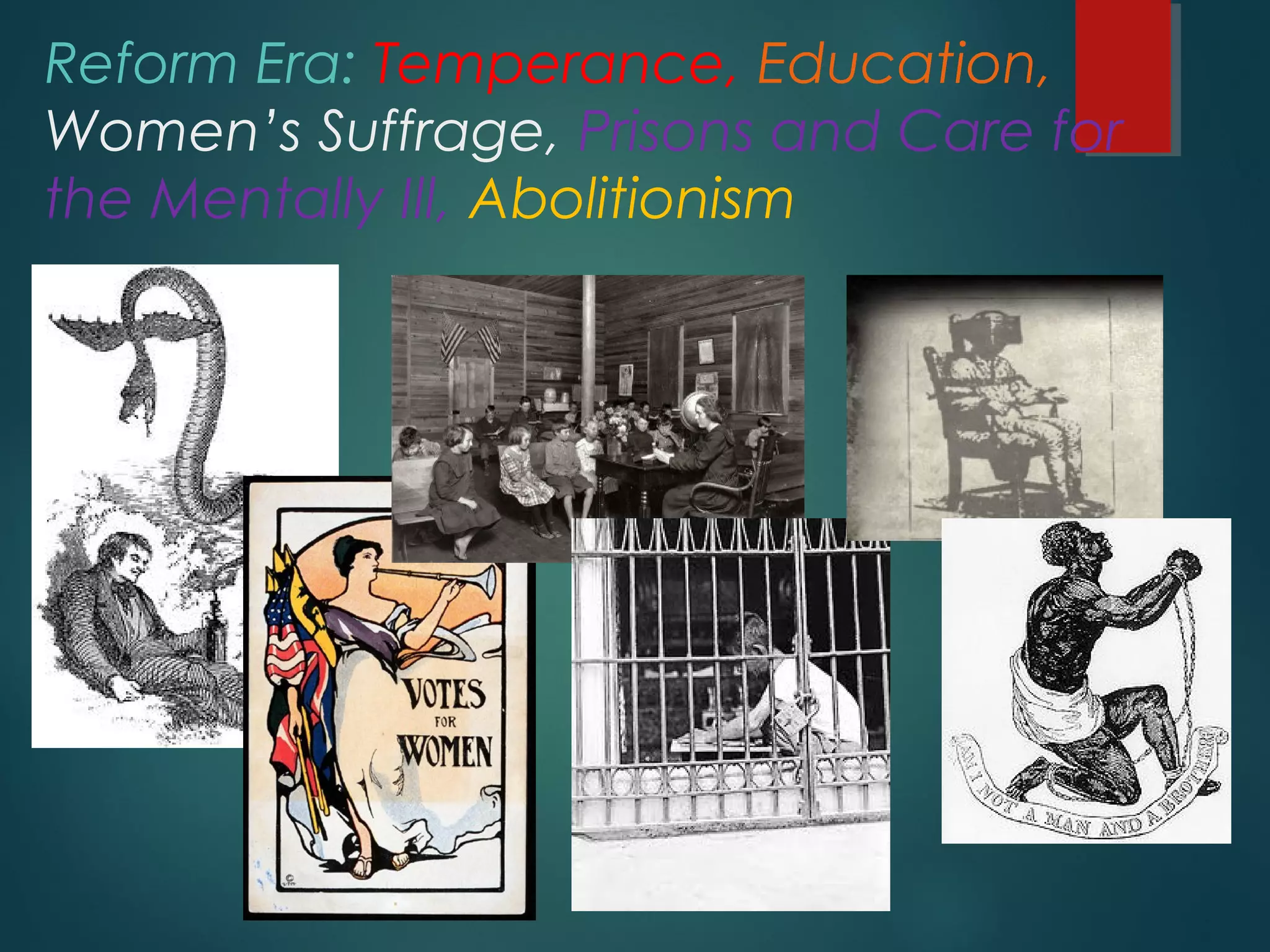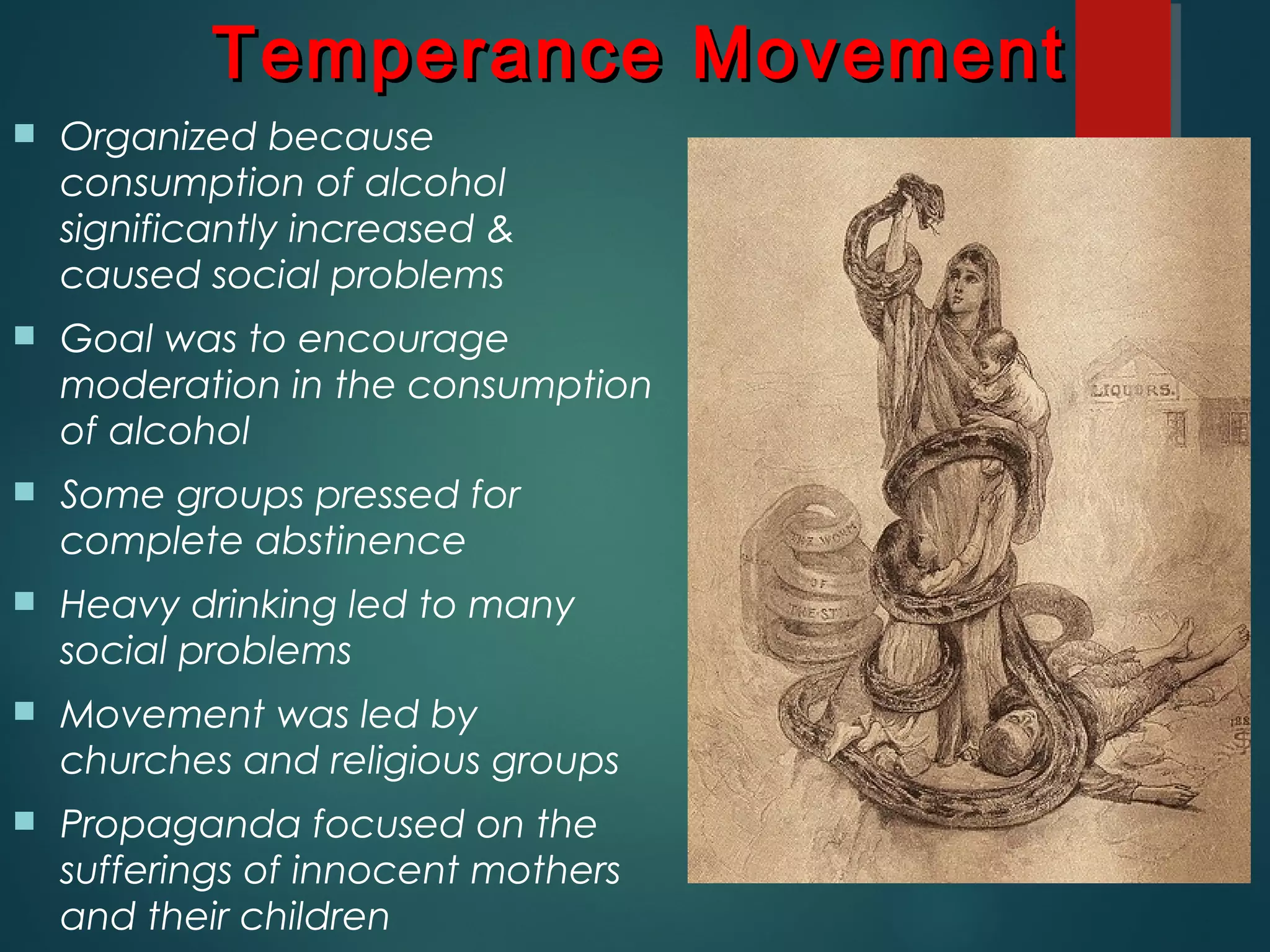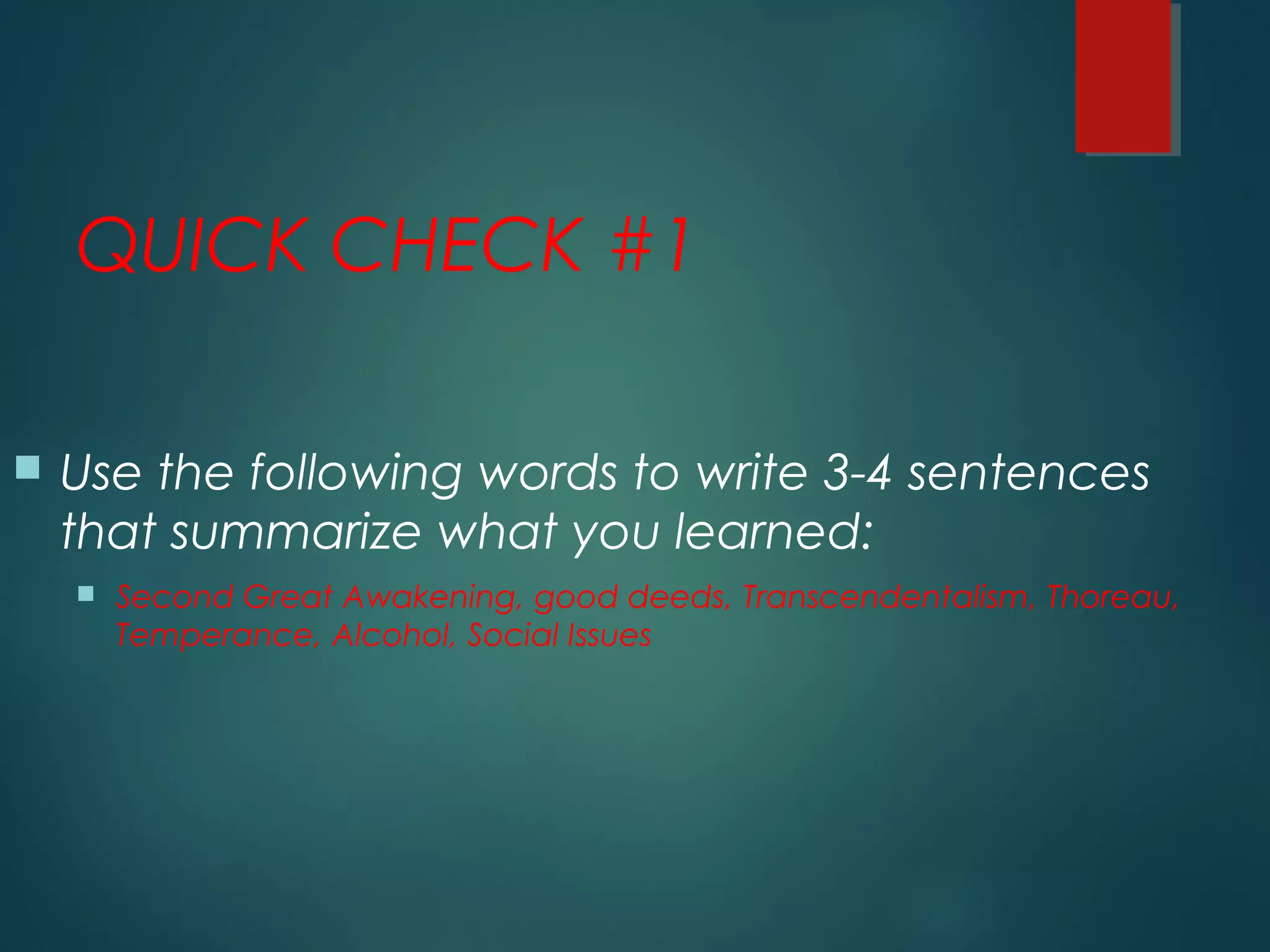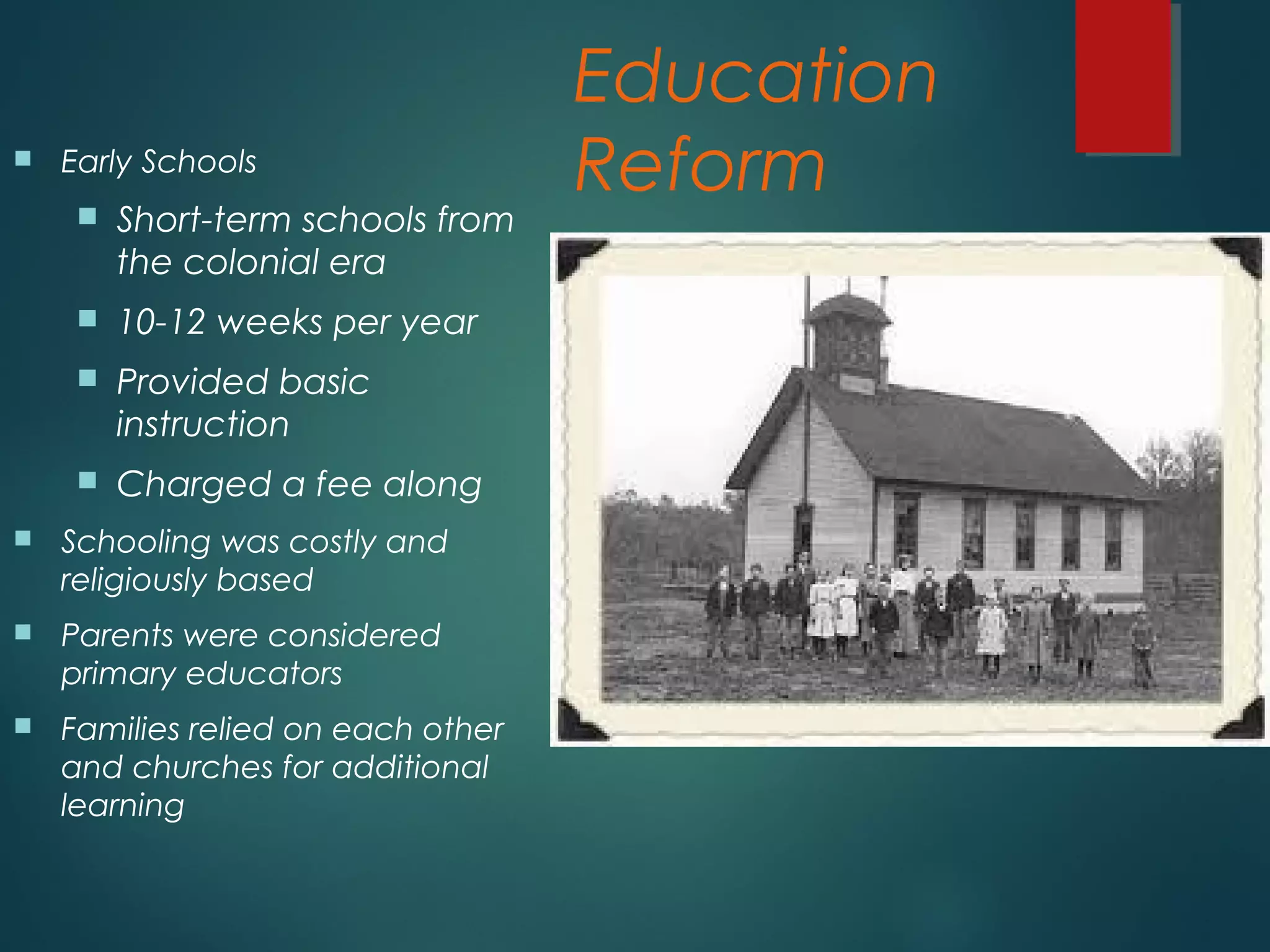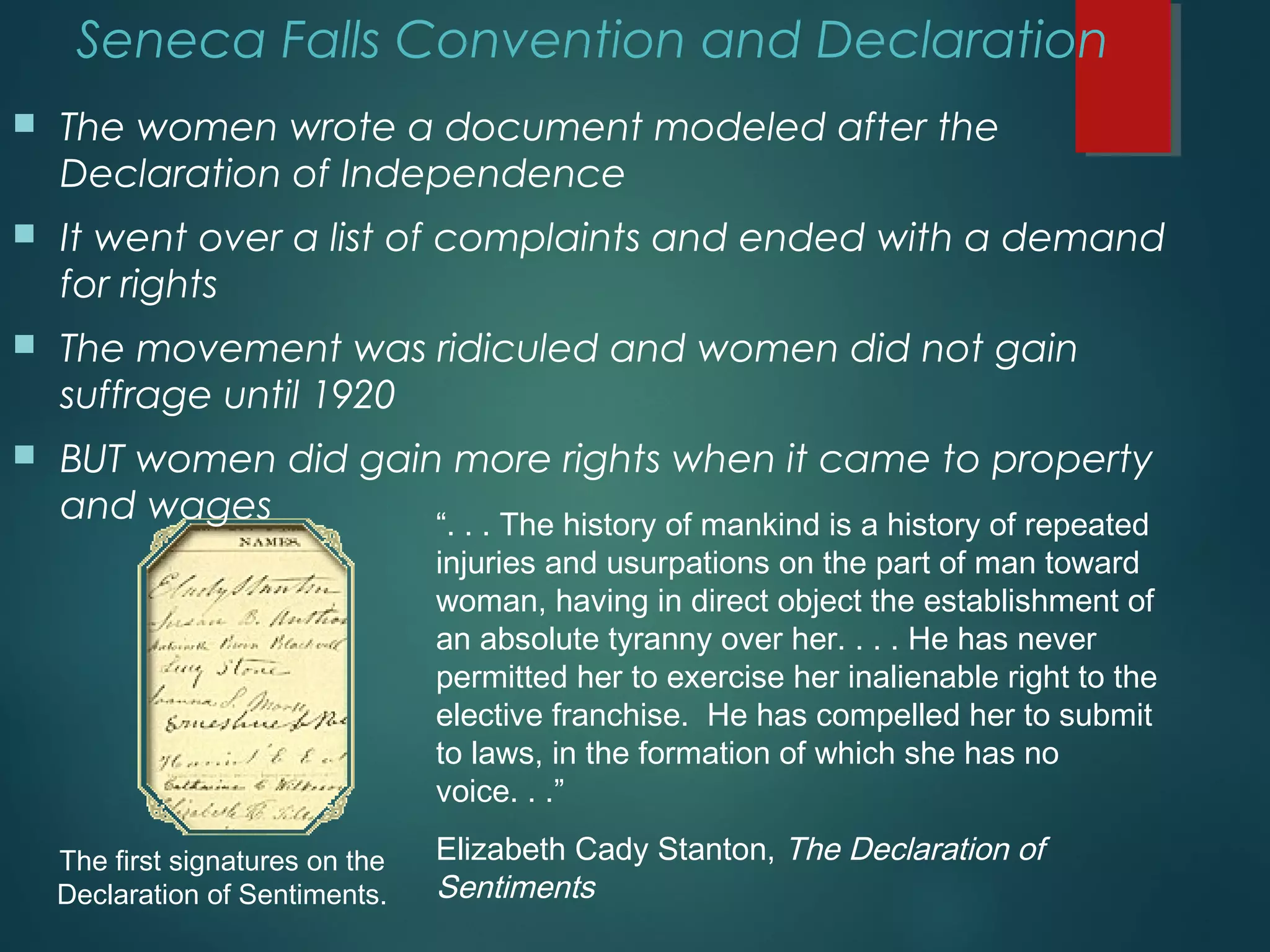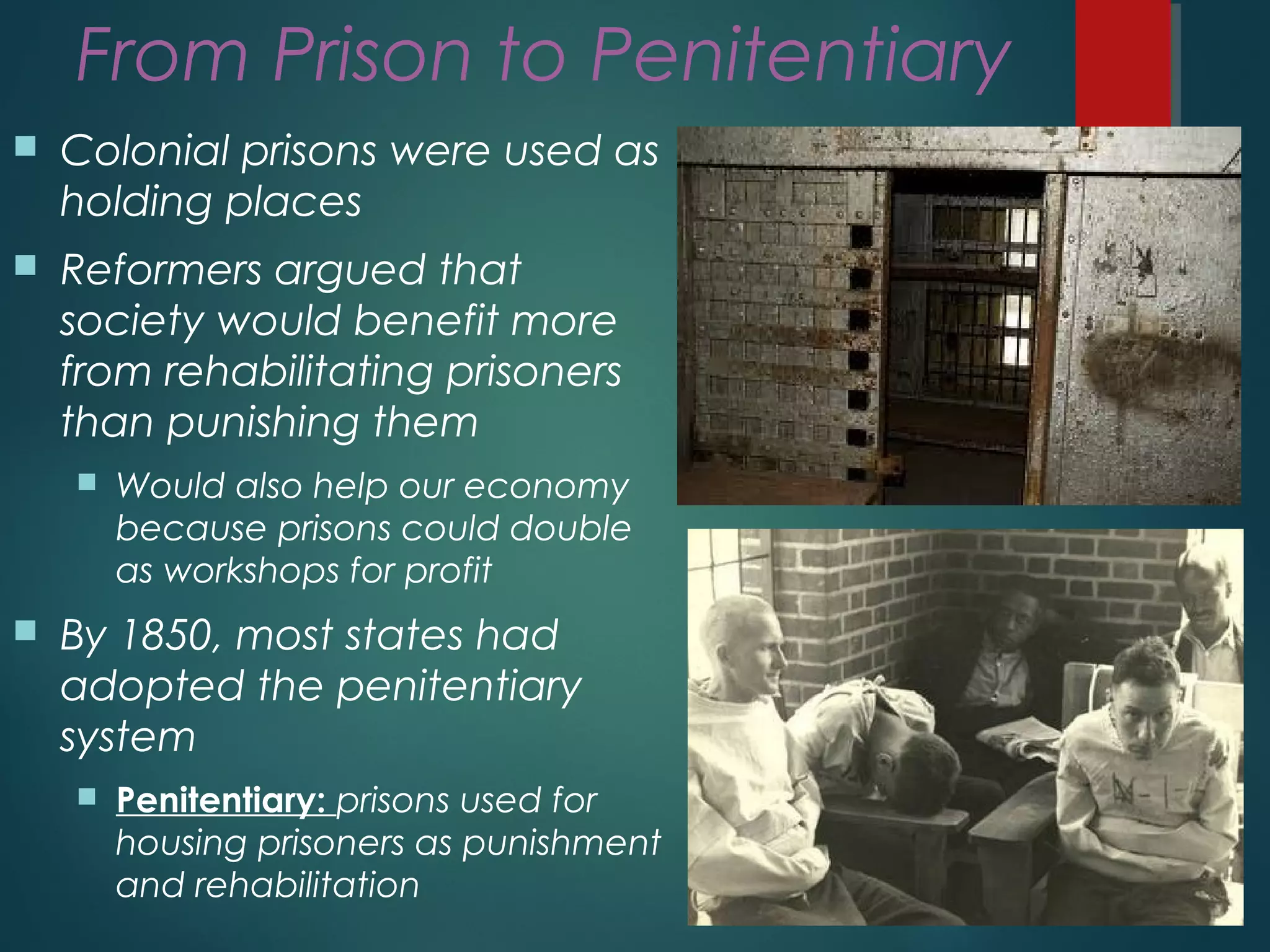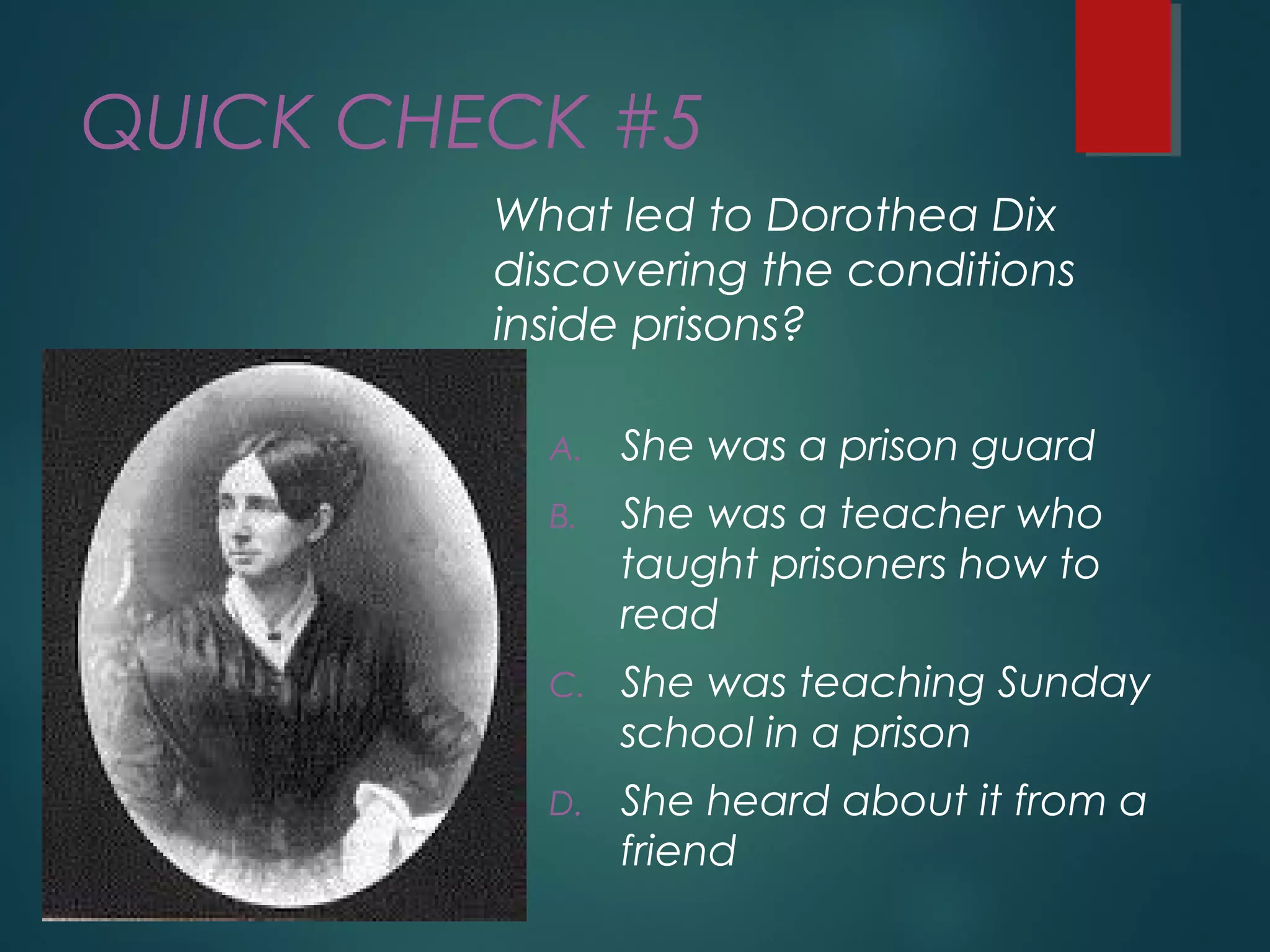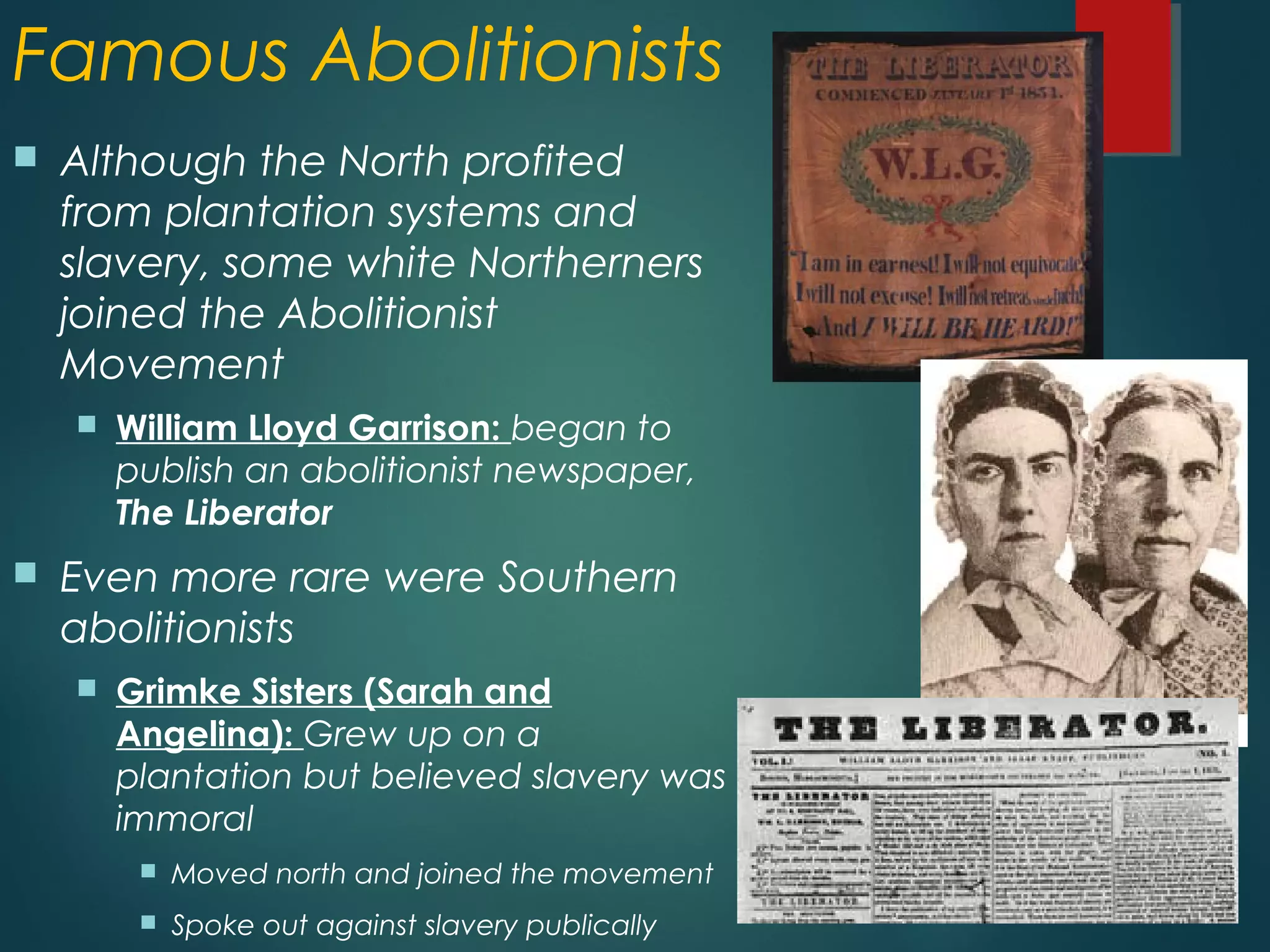The document provides information about various reform movements that occurred during the 19th century in the United States, known as the Reform Era. It discusses the Second Great Awakening religious revival movement and how it helped spark other reforms. Specifically, it outlines the Temperance movement which aimed to reduce alcohol consumption due to social problems it caused; the Education reform movement led by Horace Mann to establish public schools; the Women's Rights movement which began with the Seneca Falls Convention; reforms to prison and asylum systems to better treat prisoners and the mentally ill; and the Abolitionist movement against slavery.

